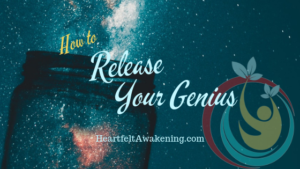You cannot think your way through emotions, you must feel through them. Have you ever found yourself in the midst of an emotional storm, trying to rationalize your way out of it? Maybe you were feeling angry, sad, anxious or overwhelmed, and you thought that if you could just think logically about the situation, you would be able to calm down and feel better. But instead of finding relief, did you end up feeling even more frustrated or stuck?
If so, don’t worry – you’re not alone. Many people believe that emotions are something we can control with our minds. We think that if we analyze them enough or find the right words to describe them, they will lose their power over us. However, this approach often backfires because it ignores one crucial fact: emotions are felt experiences.
In other words, emotions happen in our bodies as well as our minds. They involve physiological changes such as increased heart rate, tensed muscles and shallow breathing; they also trigger thoughts and memories associated with past experiences or future possibilities. Therefore, trying to “think through” emotions without acknowledging their bodily dimension is like trying to drive a car without wheels.
So what can we do instead? How can we learn to feel through our emotions in a way that honors both our mind and body? This is where my 4-step process comes into play:
Step 1: Become Aware
The first step is simply to acknowledge what emotion(s) are present for us at this moment. This may sound obvious but many times we try to ignore or suppress how we feel which only makes things worse.
Step 2: Make the Subjective Objective
Next step is identifying how this emotion manifests physically within us- does it show up as tension in your shoulders? Or perhaps butterflies in your stomach?
Step 3: Assemble the Healing Team
Once identified take deep breaths and try to focus on the physical sensation of that emotion. As you breathe in, imagine yourself filling up with air and as you exhale, release any tension or discomfort associated with that emotion.
Step 4: Release the Nervous System
Finally, it’s important to express how we feel in a way that feels safe and authentic. This could mean talking to someone we trust, writing in a journal or simply acknowledging our emotions without judgment.
By following these steps consistently over time, we begin to develop a deeper connection with ourselves and our emotions. We learn to honor both the mind and body aspects of our experience while cultivating greater self-awareness and emotional resilience. The results are measurable – increased clarity, reduced stress levels, improved relationships – but more importantly they lead us towards living an emotionally fulfilling life.
Join me on a journey of self-discovery and explore practical spirituality, productivity, and metaphysical principles to help create our best lives by balancing spiritual growth and manifestation. Subscribe to our Mindful Mastery Newsletter.
Mindful Mastery is a reader-supported publication. To receive new posts and support my work, consider becoming a free or paid subscriber.





